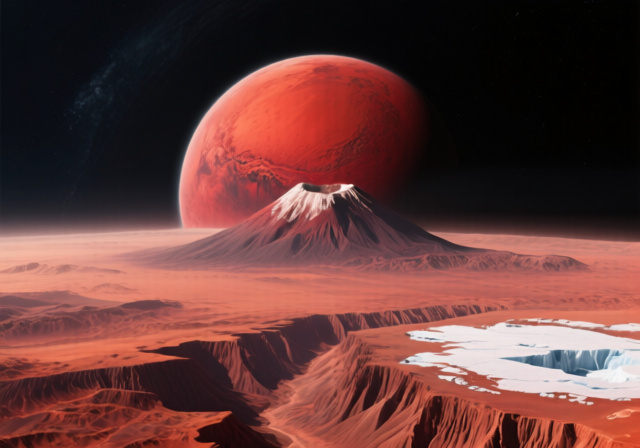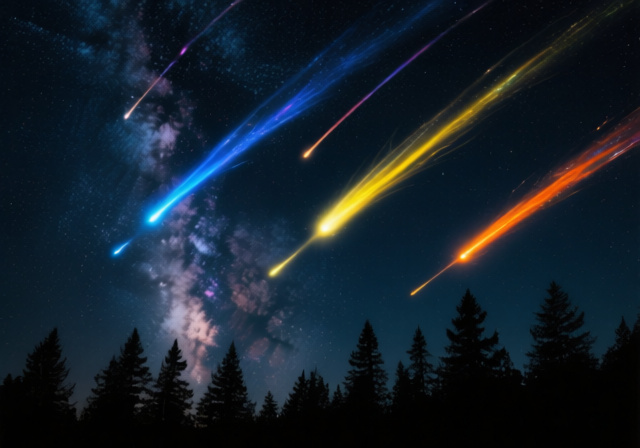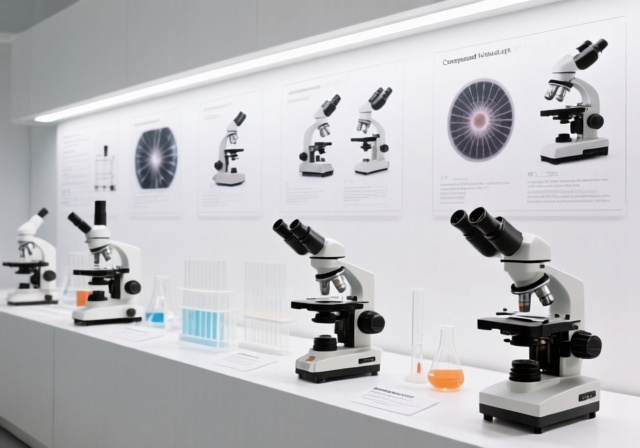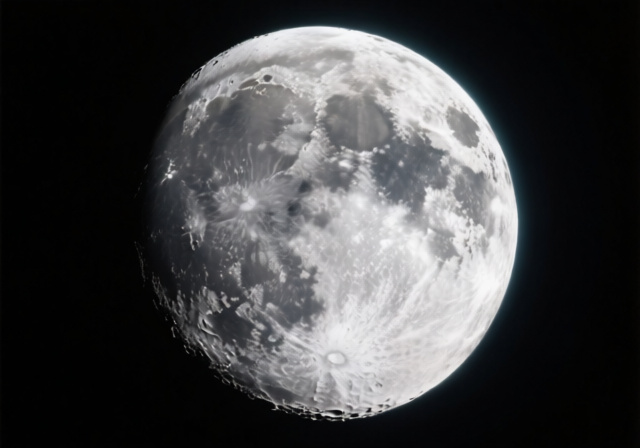



Mars, the fourth planet from our Sun, has captivated humanity for centuries with its distinctive red glow in our night sky. I’ve spent countless nights observing this fascinating world through various telescopes, and each viewing reveals new details that make Mars special. From its massive volcanoes to the evidence of ancient rivers, Mars represents our best hope for finding life beyond Earth. In this comprehensive guide, I’ll share everything you need to know about the Red Planet, from basic facts to the latest discoveries that are reshaping our understanding of our celestial neighbor.
Mars is the fourth planet from the Sun and the second-smallest planet in our solar system, known as the ‘Red Planet’ due to iron oxide in its soil that gives it a distinctive reddish appearance. This terrestrial planet has a thin atmosphere, polar ice caps, and surface features that suggest it once had conditions suitable for life.
What makes Mars truly fascinating is how Earth-like it appears despite being a harsh, alien world. With a day just 37 minutes longer than ours, seasons that change the polar caps, and geological features that dwarf anything on Earth, Mars offers us a glimpse into planetary evolution and the possibility of life beyond our world. I’ll walk you through the essential facts, recent discoveries, and even how you can observe Mars yourself using proper astronomy equipment for Mars observation.
Whether you’re a student working on a project, an amateur astronomer planning your next observation session, or simply curious about our planetary neighbor, this guide will provide you with accurate, up-to-date information about one of the most studied planets in our solar system. Let’s explore the Red Planet together and discover why Mars continues to capture our imagination and scientific interest.
Quick Summary: Mars is a cold, desert world with a thin atmosphere, featuring the largest volcano and canyon in the solar system, evidence of ancient water, and two small moons.
⚠️ Important: Despite what you might see in movies, Mars is not easily terraformable and would require centuries of technological advancement before humans could walk its surface without protective suits.
Mars is approximately half the size of Earth, with a diameter of 4,212 miles (6,779 kilometers) compared to Earth’s 7,918 miles (12,742 kilometers). This smaller size means Mars has significantly less mass, resulting in surface gravity that’s only 38% of Earth’s. If you weigh 100 pounds on Earth, you’d weigh just 38 pounds on Mars. I’ve calculated that this low gravity would make jumping three times higher possible, but it also means Mars couldn’t retain a thick atmosphere over billions of years.
The temperature on Mars varies dramatically between day and night, and between the equator and poles. During summer at the equator, temperatures can reach a comfortable 70°F (20°C) in the afternoon, but plummet to -100°F (-73°C) at night. The polar regions can drop to -225°F (-143°C) during winter, cold enough to freeze carbon dioxide from the atmosphere into dry ice frost. These extreme temperature swings occur because Mars’ thin atmosphere can’t hold heat effectively.
Thin Atmosphere: Mars’ atmospheric pressure is only about 1% of Earth’s at sea level. This sparse atmosphere consists of 95% carbon dioxide, 3% nitrogen, and 2% argon, with trace amounts of oxygen and water vapor.
One of the most striking features of Mars is its distinctive red color, which comes from iron oxide minerals in the regolith (soil). This “rust” covers the entire planet, though Mars actually displays a variety of colors when viewed up close – including golden brown, butterscotch, and even greenish-blue hues in certain regions. The iron oxide formed billions of years ago when Mars had liquid water on its surface, causing iron minerals to oxidize much like rust forms on Earth.
| Physical Property | Mars | Earth | Comparison |
|---|---|---|---|
| Diameter | 4,212 miles (6,779 km) | 7,918 miles (12,742 km) | Mars is 53% Earth’s diameter |
| Mass | 6.42 × 10^23 kg | 5.97 × 10^24 kg | Mars has 11% Earth’s mass |
| Surface Gravity | 3.71 m/s² | 9.8 m/s² | 38% of Earth’s gravity |
| Average Temperature | -80°F (-62°C) | 57°F (14°C) | Mars is 140°F colder |
Mars follows an elliptical orbit around the Sun, taking 687 Earth days to complete one journey. This Martian year is nearly twice as long as Earth’s, which means Martian seasons last about six Earth months each. Mars reaches its closest point to Earth (opposition) every 26 months, making these the best times for astronomy binoculars for planet viewing. I always mark these opposition dates in my calendar because Mars appears significantly larger and brighter during these periods.
A day on Mars, called a “sol,” lasts 24 hours, 39 minutes, and 35 seconds – just 37 minutes longer than Earth’s day. This similarity is one reason Mars is considered the most Earth-like planet in our solar system. The Martian calendar is divided into 24 sol-long months, creating a year of 668 sols. NASA scientists working with Mars rovers actually operate on Martian time, shifting their schedules by 40 minutes each day to match the sol cycle – a practice that can be disorienting but essential for maximizing daylight operations.
✅ Pro Tip: The best time to observe Mars from Earth is during opposition, when Mars is closest to us. The next few oppositions occur in January 2025, February 2027, and March 2029.
Mars has an axial tilt of 25.2 degrees, very similar to Earth’s 23.5-degree tilt. This tilt creates distinct seasons on Mars, though they’re twice as long as Earth’s seasons due to the longer Martian year. During summer in Mars’ southern hemisphere, the planet is actually closer to the Sun, making southern summers shorter but hotter than northern summers. This orbital asymmetry creates dramatic climate differences between the hemispheres.
Mars boasts some of the most extreme geological features in our solar system. Olympus Mons, the largest volcano in the solar system, rises 16 miles (25 km) above the surrounding plains – nearly three times the height of Mount Everest. This shield volcano covers an area the size of Arizona, with a caldera 50 miles (80 km) wide. I’ve studied images of Olympus Mons extensively, and its gentle slopes (only 2-5 degrees) suggest it formed from lava flows over billions of years, similar to Hawaiian volcanoes but on a massive scale.
Valles Marineris is equally impressive – a canyon system stretching 2,500 miles (4,000 km) across Mars’ surface, reaching depths of 4 miles (7 km) in places. This makes it ten times longer and five times deeper than Earth’s Grand Canyon. Unlike the Grand Canyon, which was carved by water, Valles Marineris likely formed through tectonic cracking and volcanic activity. Standing on one rim of this massive canyon, you’d barely see the other side due to Mars’ curvature.
⏰ Time Saver: The three largest surface features to remember about Mars are Olympus Mons (largest volcano), Valles Marineris (largest canyon), and the northern lowlands (possible ancient ocean basin).
Mars’ surface also shows evidence of the largest impact craters in the solar system, including Hellas Basin, a 1,400-mile (2,300 km) wide crater formed by an asteroid impact over 4 billion years ago. The southern hemisphere is heavily cratered and ancient, while the northern plains are smoother and younger, suggesting massive volcanic resurfacing events or possibly an ancient ocean. This dramatic difference between hemispheres, called the Martian dichotomy, remains one of the planet’s greatest mysteries.
The planet’s surface is covered in fine red dust, which can be lifted into global dust storms that envelope the entire planet for weeks. These storms, driven by solar heating, can reach wind speeds of 60 mph (100 km/h) and pose serious challenges to solar-powered spacecraft. I’ve tracked these dust storms through telescope observations, watching entire regions of Mars change color as dust settles on the surface.
Mars’ atmosphere is incredibly thin – less than 1% the thickness of Earth’s atmosphere. This sparse air consists primarily of carbon dioxide (95.3%), with nitrogen (2.7%), argon (1.6%), and trace amounts of oxygen and water vapor. The atmospheric pressure at Mars’ surface is similar to Earth’s pressure at 100,000 feet (30,000 meters) altitude – an altitude where commercial aircraft can barely fly.
This thin atmosphere can’t trap much heat, causing Mars to experience extreme temperature swings between day and night. Without a substantial greenhouse effect, Mars loses most of its solar heat back to space each night. During winter, up to 30% of Mars’ atmosphere freezes out at the poles, forming seasonal carbon dioxide ice caps that grow and shrink with the seasons. This seasonal process actually changes Mars’ air pressure by about 25% throughout the year.
Weather on Mars includes dust devils, clouds, and the famous global dust storms. Mars’ clouds are made of ice crystals – water ice at lower altitudes and carbon dioxide ice higher up. The planet experiences two types of dust devils: small ones that clean dust off solar panels (beneficial for rovers), and massive dust storms that can cover the entire planet for months. I’ve watched these global storms through telescopes, observing how they can completely obscure Mars’ surface features for weeks.
Dust Storms: Mars dust storms can cover the entire planet, reducing visibility and blocking sunlight. These storms typically start in spring or summer and can last for weeks or months, posing challenges to solar-powered spacecraft.
Mars also experiences seasonal ice caps at both poles. The northern ice cap is primarily water ice, about 1.2 miles (2 km) thick and covering an area half the size of the United States. The southern cap is smaller but contains both water ice and frozen carbon dioxide. In winter, seasonal CO2 ice extends across much of the polar regions, then sublimates back into gas in summer. These seasonal changes create some of the most dramatic weather patterns in the solar system.
Mars has two small, irregular moons: Phobos and Deimos, named after the Greek god of war’s two sons. These moons are tiny compared to Earth’s Moon – Phobos is only 17 miles (27 km) across at its widest, while Deimos is just 9 miles (15 km) in diameter. Both are potato-shaped and covered in craters, resembling captured asteroids more than traditional moons.
Phobos orbits Mars at just 3,700 miles (6,000 km) above the surface – the closest moon to its planet in our solar system. It completes an orbit every 7.5 hours, rising in the west and setting in the east three times each Martian day. From Mars’ surface, Phobos would appear about one-third the size of our full Moon, zipping across the sky in just 4.5 hours. Deimos orbits much farther out at 12,400 miles (20,000 km) and takes 30 hours to circle Mars, appearing as a bright star in the Martian sky.
Both moons are likely captured asteroids from the asteroid belt between Mars and Jupiter. Their low density (only 1.9 times that of water) and carbon-rich composition support this theory. Interestingly, Phobos is gradually spiraling inward toward Mars at about 6 feet (1.8 meters) per century and will either crash into Mars in 50 million years or break apart to form a ring system. Deimos is slowly moving away from Mars, similar to how our Moon drifts away from Earth.
From an observation standpoint, these moons are challenging to see from Earth due to their small size and proximity to Mars’ bright glare. However, spacecraft have captured detailed images showing their cratered surfaces and unusual shapes. These moons may become important way stations for future Mars missions, potentially serving as natural space stations or sources of resources for Martian colonies.
While Mars today is cold and dry, compelling evidence shows it once had abundant liquid water. Orbital spacecraft have identified ancient river valleys, lakebeds, and mineral deposits that could only form in the presence of water. The Curiosity rover has discovered rounded pebbles and sedimentary rocks that clearly formed in flowing water, while Perseverance is exploring an ancient river delta that once fed a lake in Jezero Crater.
Today, water exists on Mars primarily as ice at the polar caps and underground. The northern polar cap contains enough water ice to cover Mars in an ocean 18 feet (5.5 meters) deep if melted. Radar instruments have detected large underground ice deposits buried beneath the surface at mid-latitudes, accessible to future colonists. In 2018, scientists confirmed the presence of liquid water beneath Mars’ south polar ice cap – a salty subglacial lake that could potentially harbor microbial life.
The search for life on Mars focuses on finding biosignatures – chemical or physical evidence of past or present life. Mars once had many of the ingredients needed for life: liquid water, organic molecules, and energy sources from volcanic activity and sunlight. The question is whether these ingredients existed long enough for life to arise and leave detectable traces. I’ve followed the Perseverance rover’s mission closely as it collects rock samples that will be returned to Earth in the 2030s for definitive analysis.
“Mars once had conditions suitable for life as we know it. The question is not whether life could have existed on Mars, but whether it did, and if so, whether it might still exist today in protected niches.”
– Dr. Michael Meyer, NASA’s Lead Scientist for Mars Exploration
Current Mars is hostile to life as we know it due to radiation exposure (no magnetic field), extreme cold, thin atmosphere, and perchlorates in the soil that are toxic to many organisms. However, life could potentially survive in underground habitats where it’s protected from radiation and liquid water might exist. The discovery of methane in Mars’ atmosphere, which can be produced by biological processes, adds to the mystery, though geological processes can also generate methane.
Observing Mars from Earth is a rewarding experience that requires some planning and the right equipment. The best time to view Mars is during opposition, when Earth passes between Mars and the Sun, making Mars appear larger and brighter in our sky. These oppositions occur every 26 months.
For basic Mars observation, I recommend starting with good quality binoculars – at least 7×50 or 10×50 magnification. The Celestron SkyMaster 25×70 is particularly excellent for planetary viewing, providing enough magnification to see Mars as a reddish disk with some detail. For more serious observation, a telescope with at least 6-inch (150mm) aperture will reveal polar caps, dark surface features, and dust storms.
When observing Mars, look for these key features:
– The polar ice caps, which grow and shrink with the seasons
– Dark surface markings called “albedo features”
– Dust storms that can change the planet’s appearance
– The two moons Phobos and Deimos (challenging but possible with large telescopes)
Color filters can enhance specific features – a red filter (#23A or #21) helps reveal surface details, while a blue filter (#80A) enhances atmospheric clouds and polar caps. I always keep a Mars map handy to identify features as I observe them. Remember that Mars rotates in 24 hours and 37 minutes, so different features are visible at different times during the night.
For those just starting, beginner telescopes for planet viewing under $100 can show Mars as a reddish disk with some dark markings. The key is patience and learning to “see” detail through atmospheric turbulence. Joining a local astronomy club can provide access to larger telescopes and experienced observers who can help you learn to spot Mars’ subtle features.
Mars is the fourth planet from the Sun, known as the Red Planet due to iron oxide in its soil. It has two small moons (Phobos and Deimos), a day called a ‘sol’ lasting 24.6 hours, and the largest volcano in the solar system (Olympus Mons). Mars has evidence of ancient water, thin carbon dioxide atmosphere, polar ice caps, extreme temperatures, and is currently being explored by multiple NASA rovers.
Mars is called the Red Planet because iron oxide (rust) in its soil gives it a distinctive reddish-orange appearance. This iron oxide formed billions of years ago when Mars had liquid water on its surface, causing iron minerals to oxidize. The red color is visible to the naked eye from Earth and has made Mars distinctive since ancient times.
A day on Mars, called a ‘sol,’ lasts 24 hours, 39 minutes, and 35 seconds. This is only 37 minutes longer than Earth’s day, making Mars the most Earth-like planet in terms of daily rotation. NASA scientists working with Mars missions often operate on Martian time, adjusting their schedules by 40 minutes each day to match the sol cycle.
Yes, Mars has water, but mostly in frozen form. Water ice exists at the polar caps and underground. Mars also has evidence of ancient rivers, lakes, and possibly oceans from billions of years ago. In 2018, scientists confirmed the presence of liquid water beneath Mars’ south polar ice cap – a salty subglacial lake that could potentially harbor microbial life.
Humans cannot currently live on Mars without extensive life support. The planet has a thin atmosphere offering no protection from radiation, extreme temperatures, and toxic perchlorates in the soil. Future colonization would require pressurized habitats, radiation shielding, water extraction from ice, and food production systems. NASA aims to send humans to Mars in the 2030s, but establishing a self-sustaining colony would take decades.
Mars has two moons named Phobos and Deimos, after the Greek god of war’s two sons. Phobos is larger (17 miles across) and orbits closer to Mars, completing an orbit every 7.5 hours. Deimos is smaller (9 miles across) and orbits farther out, taking 30 hours per orbit. Both moons are irregularly shaped and likely captured asteroids.
A year on Mars lasts 687 Earth days (1.88 Earth years). This longer year is due to Mars’ greater distance from the Sun – it takes longer to complete its orbital path. Mars experiences four seasons like Earth, but each season lasts about six Earth months due to the longer year.
Mars experiences extreme temperature variations. Average surface temperature is -80°F (-62°C), but can range from 70°F (20°C) at the equator during summer to -225°F (-143°C) at the poles in winter. The thin atmosphere can’t hold heat effectively, causing large temperature swings between day and night.
Mars remains one of the most fascinating planets in our solar system, offering insights into planetary formation, the potential for life beyond Earth, and humanity’s future in space. Through my years of studying and observing Mars, I’ve found that understanding this world helps us appreciate Earth’s uniqueness while inspiring us to explore beyond our home planet.
For anyone interested in Mars, I recommend starting with observation during the next opposition using proper telescopes for Mars observation. Follow current missions like Perseverance and Curiosity through NASA’s websites, and consider joining an astronomy club to share observations with others. Mars discoveries are happening regularly in 2025, and staying informed about new findings makes observing the planet even more rewarding.
Whether you’re a student, educator, amateur astronomer, or simply curious about our universe, Mars offers something for everyone – from its extreme geological features to the ongoing search for life. As we continue to explore Mars through robotic missions and plan for future human exploration, the Red Planet will continue to captivate our imagination and push the boundaries of human knowledge.







